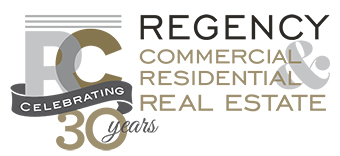Mortgage rates are soaring. Commercial interest rates are skyrocketing. A divided Congress means less decisive action from Washington. And fears of recession still run high as the Federal Reserve seeks to curb inflation.
This nerve-rattling uncertainty results in a complex commercial real estate market that’s ripe for savvy investors. Their battle-tested expertise — analyzing key performance indicators, pricing trends and inflation’s impact — is a powerful differentiator for shaping a robust portfolio.
Consider the value of multi-residence rental properties. With mortgage rates at a 16-year high, home ownership is unattainable for many. That means the market for multi-residence rental properties will remain strong. Elsewhere, affordable-housing remains in huge demand. New York, New Jersey, Pennsylvania and Connecticut have 31 to 40 available and affordable rental units for every 100 extremely low-income renter households, according to the National Low Income Housing Coalition.

Commercial properties remain a buying opportunity because prices are down 13% this year, according to the Green Street Commercial Property Price Index®. The market had been increasing into 2022 due to the bounce-back from Covid and returns to office work that injected vitality and momentum. However, drags on the economy, such as inflation, caught up and skewed pricing. Still, longer-term investors are likely to benefit even as hybrid work models take deeper root. Watch for Class B or lower office buildings to be repurposed for residential or other appropriate uses.
Elsewhere in the commercial sector, retail is expected continue to thrive as long as the strength in wage growth, the job market and productivity persist. Demand for industrial space remains strong, fueled by growth in online shopping and the need for distribution centers. J.P. Morgan’s 2022 midyear commercial real estate outlook report predicted that industrial properties may transform into multi-use facilities, with offices and showrooms, plus amenities such as gymnasiums.
Suburban offices are “a more reliable target” than other areas, Green Street says. New York City northern suburbs such as Westchester County always represent sterling opportunities due to proximity to the city, quality of life and demographics. These areas also will experience little or no rent decreases due to enduring value and opportunity.
No matter the location, a diverse real estate portfolio is key, especially in a market fraught with challenges. A struggling market is an opportune time to strengthen that diversity, especially for cash-laden investors ready to buy at discount prices. Time will prove an investment’s value when the market recovers, as it always does.
So, commercial real estate investors, leverage that savvy. Take action. Capitalize on opportunities that will pay off.
Rajeev Chennattu, founder and owner of Regency Commercial Real Estate in Scarsdale, N.Y., has been a leading real estate investment adviser and broker for 35 years. He’s a multi-dimensional entrepreneur and deal maker who has successfully surfed all economic climates. Visit regencyrealtyonline.com or contact Chennattu at rchennattu@gmail.com.

